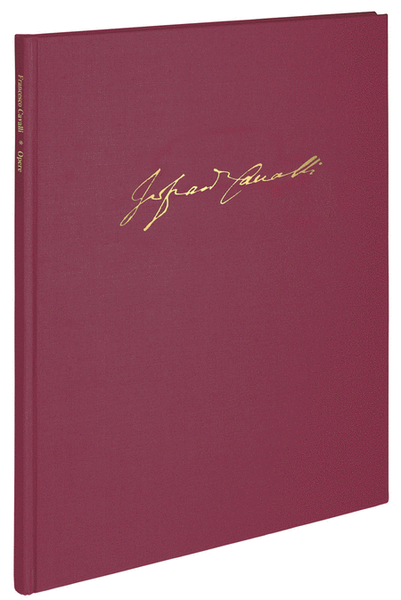Artemisia -Dramma per musica
Dramma per musica
-
Ships in 1 to 2 weeks
Details
Description
SKU: BA.BA08906-01
Dramma per musica. Composed by Francesco Cavalli. Edited by Hendrik Schulze and Sara Elisa Stangalino. This edition: Edition of selected works, Urtext edition. Linen. Francesco Cavalli. Opere. Edition of selected works, Score. Baerenreiter Verlag #BA08906-01. Published by Baerenreiter Verlag (BA.BA08906-01).ISBN 9790006556663. 33 x 25.8 cm inches. Text Language: Italian. Preface: Rosand, Ellen / Schulze, Hendrik. Text: Minato, Nicolò.
The opera Artemisia by composer Francesco Cavalli was performed for the first time in 1657 in Venice, at a time when regular performances of opera had become firmly established, with eight to ten new operas being staged per year. But the opera is in no way conventional; on the contrary, as the numerous alterations and corrections in the original score reveal, Cavalli and the librettist Nicolo Minato were extremely keen to adopt new approaches in the dramatic and musical narrative. And so, in comparison with other Venetian operas of the 17th century, Artemisia comes across as fresh and rich in variety. Especially with the integration of the comic sub-plot into the sensitive, yet serious main plot, Minato and Cavalli succeed in depicting no fewer than six protagonists as thinking, acting and feeling beings - individually and movingly.
Artemisia - a character inspired by the historic figure of Artemisia I of Caria (c. 480BC) - is a queen who has to disguise her personal feelings because of the social pressures of her position, resulting in extreme inner conflicts. In the course of the operatic plot, she then learns to trust her emotions more and thereby wins back her personal freedom - a touching psychological change which can also also be directly understood by modern audiences. But in the opera it is treated as anything but a merely psychologizing inner drama; it also has a highly entertaining plot, including the appearance of a ghost, a duel, attempts at blackmail, successful and unsuccessful courtships, declarations of war and peace settlements, and a comic sub-plot in the servants' quarters which is reminiscent of the pranks of Max and Moritz.
Cavalli was inspired by this drama to compose an extremely lively and thrilling musical setting, with some arias which are truly sparkling musical highlights. The composer shows himself to be at the peak of his dramatic art - he presents the plot, with all its emotional moments, in an exciting, beautiful, varied and at the same time witty way, constantly combining the emotion and the action in the music. In his uniquely highly melodic recitative style, he relates the story so that present-day audiences still have the feeling that they are witnessing the experiences of real people.
The new edition of the opera Artemisia is suitable both for performances and study purposes. It is based on Cavalli's manuscript full score, which the composer used as the basis for his own performances of the opera, and thus contains a great deal of information on performance practice in the 17th century. To a certain extent it enables us to gain a view of the opera from the perspective of Cavalli's own desk in the orchestra. These discoveries have been incorporated into the edition and are listed in an extensive critical apparatus, clearly presented. For a modern performance, the edition also offers numerous suggestions and material so that the opera can be adapted to suit particular performance conditions. This edition of Artemisia presents a Baroque opera in which the well-known qualities of Francesco Cavalli's music are combined with a captivating plot, enabling it to be presented to modern audiences in many different ways.
About Barenreiter Urtext
What can I expect from a Barenreiter Urtext edition?
MUSICOLOGICALLY SOUND
- A reliable musical text based on all available sources
- A description of the sources
- Information on the genesis and history of the work
- Valuable notes on performance practice
- Includes an introduction with critical commentary explaining source discrepancies and editorial decisions
... AND PRACTICAL
- Page-turns, fold-out pages, and cues where you need them
- A well-presented layout and a user-friendly format
- Excellent print quality
- Superior paper and binding

 Share
Share